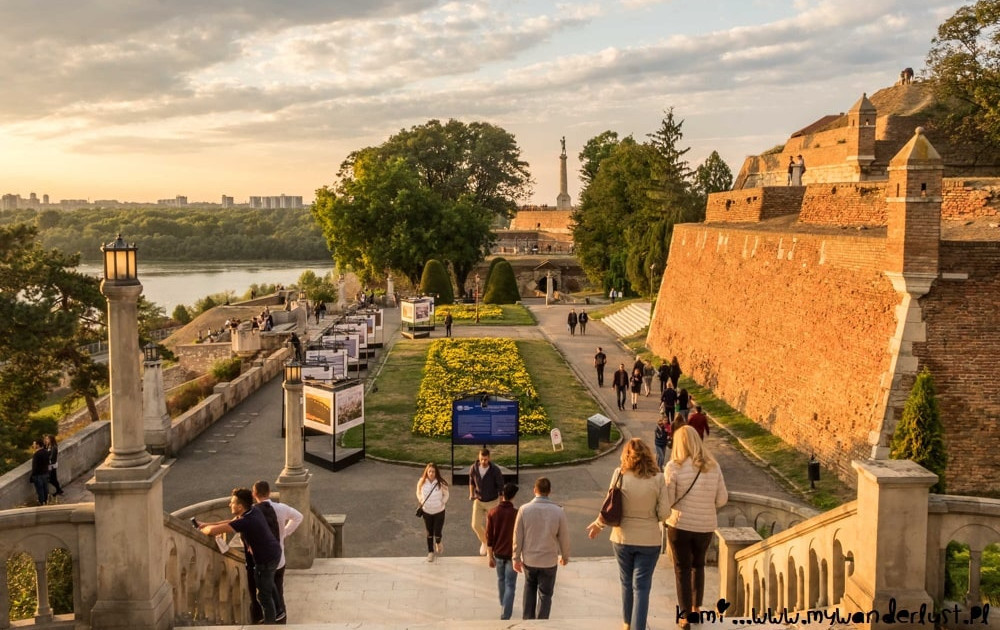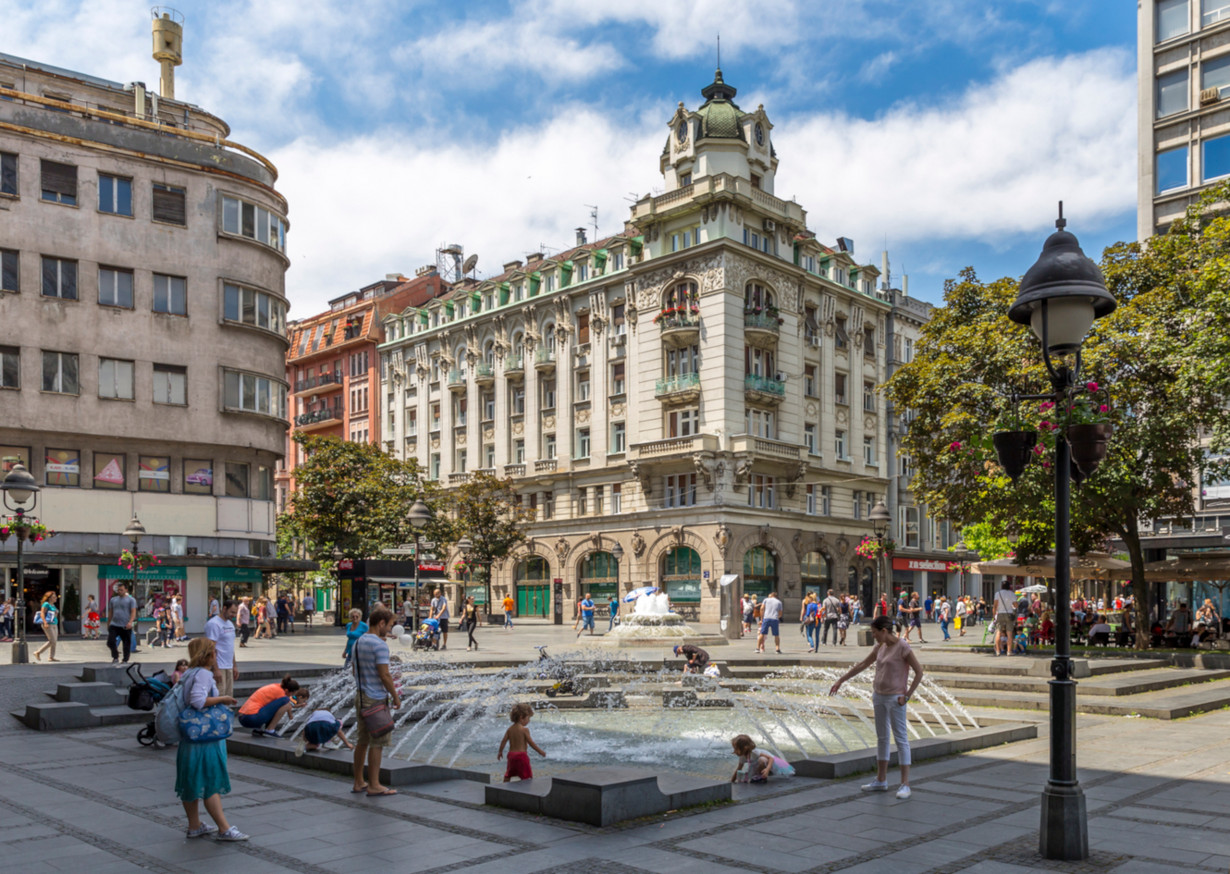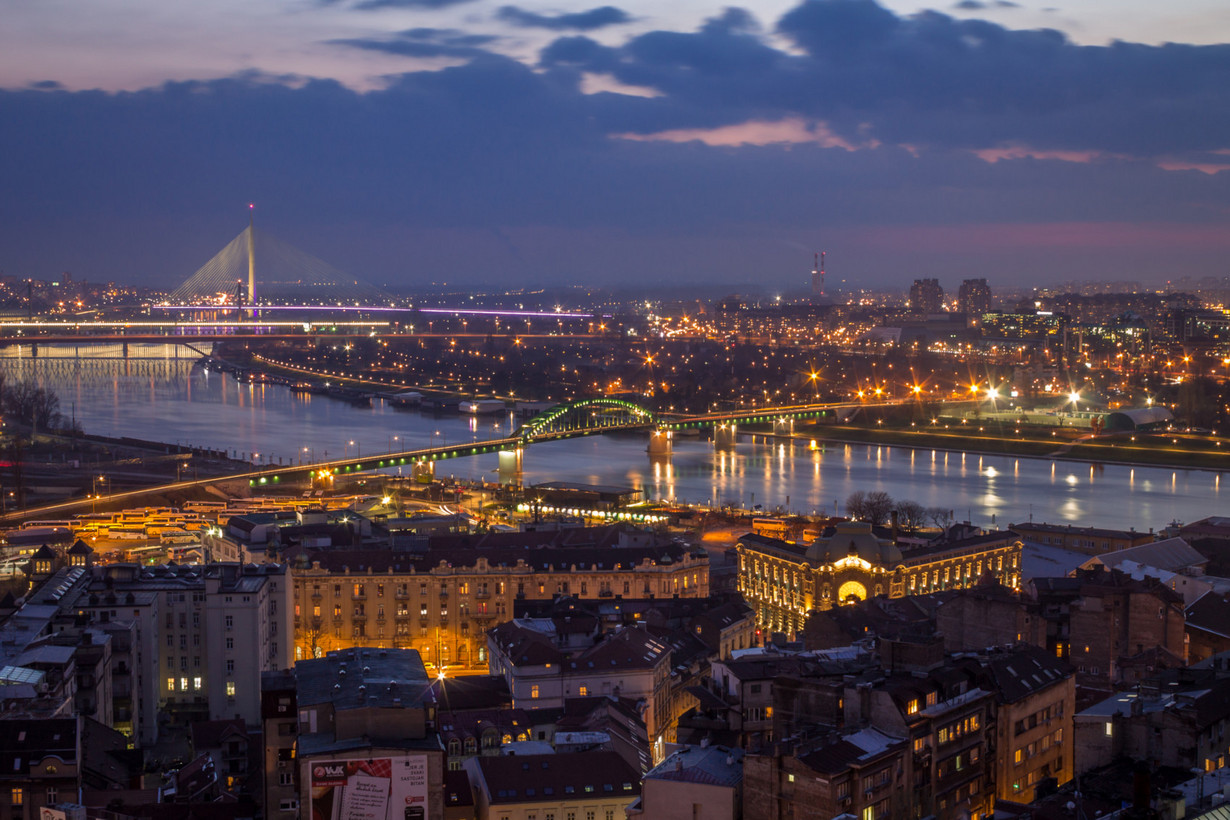Belgrade is an exceptionally vibrant and outspoken city. Its history dates back to the 6th millennium BC, when the Vinča Culture, one of the most important prehistoric cultures of Europe, evolved with its epicenter within Belgrade’s area.
Many cultures and tribes left their mark in its long and turbulent history: Thraco-Dacians, Celts, Romans, Byzantines, Slavs, Ottomans, Austro-Hungarians, have all shaped today’s capital of Serbia into one of the most diverse and interesting cities of South-East Europe. Even the first Buddhist temple in Europe was built in Belgrade!
A walk through the city’s center would bring quick shifts of architectural and emotional settings – from a monumental medieval fortress or a 16th century Ottoman mosque, through elegant Habsburg buildings and the Sveti Sava temple – one of the largest Eastern Orthodox Churches in the world, to the Palace of Serbia - the monumental example of the 20th century Yugoslav modernism, or shiny contemporary business buildings.
With its population of 1,23 million in the urban area, Belgrade is the capital of Serbia and the largest city in the Western Balkans. It is located at the confluence of the Sava and the Danube rivers, at the very border of the Pannonian Plain and the Balkans – the city’s favorite spot for watching stunning sunsets.
Belgrade's vibrant pace and atmosphere often appeal to foreigners, who quickly become an integral part of the city.
We invite you to make the journey through Belgrade’s unique magic the time of your life and to gain invaluable life and academic experience at the University of Belgrade.
Top Tourist Attractions in Belgrade

Belgrade, the capital of Serbia, is a city rich in history, culture, and vibrant nightlife. Here are some of the most famous attractions that visitors should not miss:
Belgrade Fortress (Kalemegdan)
One of the most iconic landmarks in Belgrade, Kalemegdan Fortress offers stunning views of the confluence of the Sava and Danube rivers. The Fortress is a historical site featuring ancient walls, museums, and beautiful parks, making it a perfect place for a nice walk.
Knez Mihailova Street
This pedestrian-only street is the heart of the city's shopping and cultural scene. Lined with historic buildings, cafes, restaurants, and shops, Knez Mihailova is a great place to experience Belgrade’s cheerful atmosphere
Skadarlija – The Bohemian Quarter
Often compared to Montmartre in Paris, Skadarlija is a charming cobblestone street filled with traditional Serbian restaurants (kafanas), live music, and an old-world ambiance. It is the best place to enjoy authentic Serbian cuisine and local hospitality.
St. Sava Temple
One of the largest Orthodox churches in the world, St. Sava Temple is a breathtaking sight with its grand white façade and impressive golden domes. The interior is still under construction, but its magnificence is undeniable.
Republic Square (Trg Republike)
The central square of Belgrade, home to the National Museum and the National Theatre, is a key meeting point for locals and tourists. The statue of Prince Mihailo Obrenović is a famous landmark in the square.
Ada Ciganlija
Known as "Belgrade’s Sea," Ada Ciganlija is a river island turned into a recreational area. It offers beaches, cycling paths, water sports, and cafes, making it an ideal place to relax during the summer.
Zemun and the Gardos Tower
Located on the banks of the Danube River, Zemun is a charming neighborhood with Austro-Hungarian architecture, picturesque streets, and the famous Gardos Tower, which provides a panoramic view of the city.
Nikola Tesla Museum
Dedicated to the life and work of Nikola Tesla, this museum showcases his inventions and personal belongings. Visitors can see working models of Tesla’s experiments and learn about his groundbreaking contributions to science.
Avala Tower
Standing on the Avala Mountain just outside the city, this 204-meter-high tower offers breathtaking views of Belgrade and the surrounding landscapes. It is a popular destination for those looking for a scenic escape from the city.
The House of Flowers (Josip Broz Tito’s Mausoleum)
A historical site dedicated to the former Yugoslav leader Josip Broz Tito. It attracts history enthusiasts who want to learn more about Yugoslavia’s past.
CETINJSKA DISTRICT
represents a small alternative and urban district in the city center, located at Cetinjska Street No. 15. The urban district was formed around an old brewery, and nowadays is home to a large number of cafés, bars, galleries, and clubs.
GASTROSOR DISTRICT
represents the first gastro-park in the Balkans. It spreads over a 7-acre location of the old storage facility near the urban core of Belgrade. It hosts a variety of pubs, bars, clubs and restaurants and currently represents a “place to be” in Belgrade.

Address of Venue
Main Building (Check-in etc):
University of Belgrade
Faculty of Philology
Studentski trg 3
Belgrade

Questions Regarding Accommodation or Belgrade?
Please contact our partners from Miross via ecer2025(at)miross.rs
Useful Links
National Tourism Organisation of Serbia:
https://www.serbia.travel/en
Tourist organization of Belgrade, Serbia:
https://www.tob.rs/en
Belgrade City:
https://www.beograd.rs/en/discover-belgrade/
Belgrade and Serbia:
https://www.serbia.travel/en/see-serbia/cities-in-serbia/belgrade


